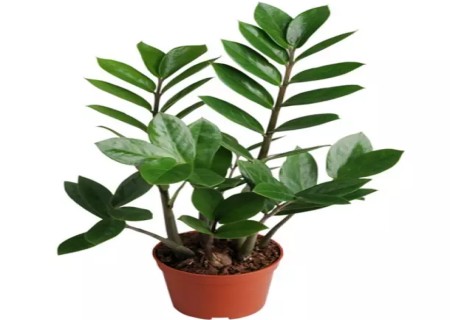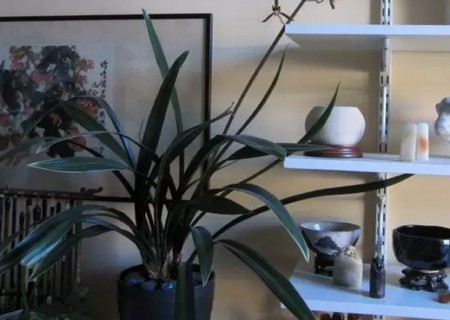How to raise the good luck of potted plants
Fortune is a beautiful indoor potted flower that can be viewed and appreciated. It has a unique rosette plant type, bright spikes, and a longer flowering period gradually becoming the "darling" on the flower market. Especially its red color, giving people the feeling is active, especially suitable for people who like vitality. And fortune can be said to be flowers in the boutique, showing the owner of the high grade. Cooperate with home furnishings to breed, add a beautiful scenery. Imagine seeing beautiful flowers every day, how pleasant it is. A pot of good luck, bring happiness to yourself, can also bring good luck.
Fortune is a very vivid name given to it by flower farmers. It is a perennial herb of Bromeliaceae. Its plant stems are clustered, its plant type is beautiful, its leaves are evergreen all the year round, its leaves are curved and deep, its leaves are diverse, its leaves grow from the main stem and spread out everywhere, forming a lotus platform distribution. Its like high temperature, wet, half overcast environment, potting soil suitable for use with humus sandy soil. Its root system is underdeveloped, water and nutrient absorption mainly rely on leaves, its style center can store water, should often irrigate to keep the center λ and leaves moist, so that it grows vigorously.

Fortune can directly absorb these stored water and dissolved nutrients in the water for growth, so the soil moisture requirements are not high. Their ecological habits determine the cultivation conditions, first of all, high air humidity, loose ventilation and good drainage soil; growth temperature is 20-28℃, winter room temperature should not be lower than 12℃, when the room temperature drops to 5℃ will freeze to death. In the north of our country, spring, summer, autumn three seasons should be appropriate shade, winter must be placed in bright indoor, let them see more oblique sunlight.
In addition to shade, ventilation should be strengthened during maintenance. During the growth season, liquid fertilizer should be applied every half month, or ammonium sulfate and potassium dihydrogen phosphate 1000 times aqueous solution can be poured into the leaf tube in the center of the leaf center for absorption and utilization by the plant. Winter and early spring dry climate should often spray water to the leaves, will not cause leaf decay. Every two years, the pot should be turned over and replaced. Do not use pots too large, the largest planted into the "two pots" pot can be.
Potted Lucky Head Cultivation Method:
1. Soil
Pineapple suitable for loose, fertile, humus soil growth. For family cultivation, 2 parts of peat soil can be mixed with 1 part of fine sand to prepare culture soil.
2. Light
To make pineapple leaf color bright, flowering on time, light is very important, should be placed in a semi-shady ventilated place, take scattered light cultivation. Summer sunlight should not be direct, strong light easy to make leaves burned, appear miscellaneous spots. But do not put it in the shade for a long time, otherwise the leaves will lose their luster and become lighter. At least 4 to 5 hours of direct sunlight per day in winter.
3. Temperature
Pineapple originated in tropical South America, like warm, growth temperature 16-24℃;13℃ below the slow growth, winter minimum temperature should not be lower than 10℃, otherwise it will make the plant by freezing injury, so that the leaf color yellow, affecting the healthy growth of plants. Do not have a large temperature difference between day and night.
4. Watering
The roots of pineapple are very underdeveloped, and the absorption of water and nutrients mainly depends on the leaves. The basal leaves of pineapple are closely arranged in lotus-like leaf tubes, and some of them are cup-shaped in the center to store water without leakage. Therefore, irrigation should be kept frequently in the center and between leaves during cultivation and management. Rainy days generally do not water. In dry climate, sultry or low temperature, the leaf edge and leaf tip of the lucky head will easily appear scorched phenomenon, so to keep the pot soil moist, spray water to the leaf surface 1-2 times a day, the cup-shaped part in the middle of the leaf seat can be filled with water. However, remember not to water too frequently. When watering, water should be poured in the middle cup, not directly in the flowerpot. At the same time, pay attention to the middle cup, feel the moisture inside to control the amount of water, and the water should be clean.
5. Fertilization
Lucky head root system is underdeveloped, only small and short root system, so do not apply too much fertilizer, prevent root rot, leaves yellow, to use thin fertilizer water to feed. No fertilizer is needed at flowering stage, but flowers should be cut off and fertilizer added in time after flowering.
Notes:
Good luck has to pay attention to different maintenance throughout the year:
In winter and spring, we should pay attention to the change of temperature. Once the temperature is lower than 10℃, transparent plastic bags should be put on in time to reduce the stimulation of cold, and the temperature should rise in time to open the plastic bags. In summer, when the sun is hot, the ornamental pineapples should be placed away from direct sunlight to avoid being burned.
Autumn sunshine is shortened, but the sun is still strong, it is still necessary to maintain semi-shade and avoid direct sunlight, and more sunshine can be given after autumn cool, while maintaining humidity in the air above 50%.
As for the inflorescences extracted in winter and spring, after half a year of viewing period, they have gradually faded. At this time, they can be cut off to reduce the consumption of nutrients, so as to facilitate the growth of lateral buds. When the lateral teeth grow to 10 cm long, the lateral teeth can be cut with a knife and planted in a small basin with a diameter of 9 cm.
If you raise it indoors in winter, you can spray more water when the air is dry, and don't accumulate water; drought, low temperature and sultry heat are not good, as long as you care, you can raise it!
Time: 2019-05-31 Click:
- Prev

How to raise potted Artemisia mandshurica
The money tree gets its name from the shape of its leaves, which are like coins used in ancient times, clusters of leaves, like strings of coins, so they are loved and planted by Chinese people who advocate good meaning. The moral of the money tree is beautiful, which means to attract wealth, wealth and wealth.
- Next

Culture methods and matters needing attention of potted Cymbidium
As one of the most famous national orchids in our country, we should certainly take a look at the beautiful orchid. In fact, it has many laudatory names, such as orchid, orchid, and so on, which symbolize beauty and blessing. Its leaves are belt-shaped, very thin dark green, and have a little leathery, so they are called Mulan.
Related
- Fuxing push coffee new agricultural production and marketing class: lack of small-scale processing plants
- Jujube rice field leisure farm deep ploughing Yilan for five years to create a space for organic food and play
- Nongyu Farm-A trial of organic papaya for brave women with advanced technology
- Four points for attention in the prevention and control of diseases and insect pests of edible fungi
- How to add nutrient solution to Edible Fungi
- Is there any good way to control edible fungus mites?
- Open Inoculation Technology of Edible Fungi
- Is there any clever way to use fertilizer for edible fungus in winter?
- What agents are used to kill the pathogens of edible fungi in the mushroom shed?
- Rapid drying of Edible Fungi

